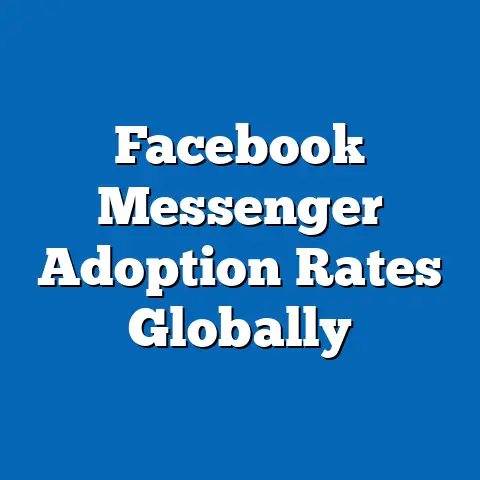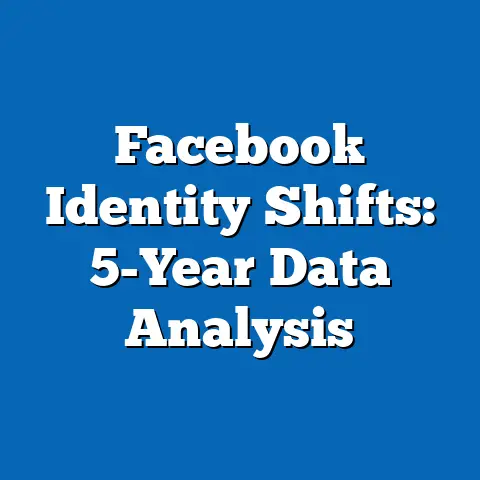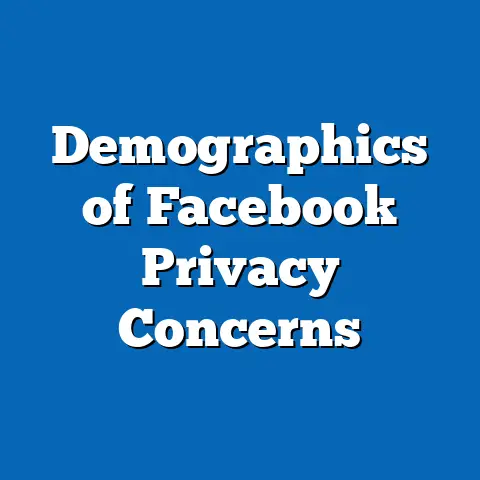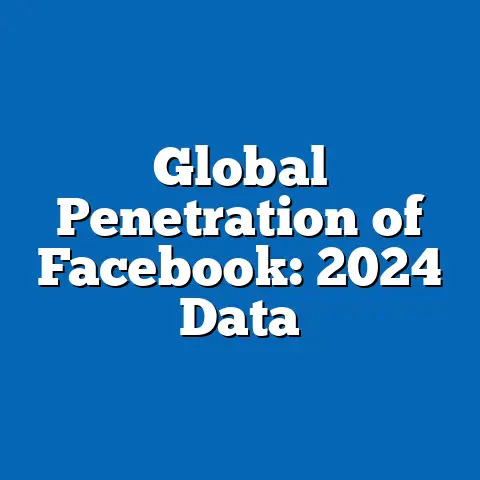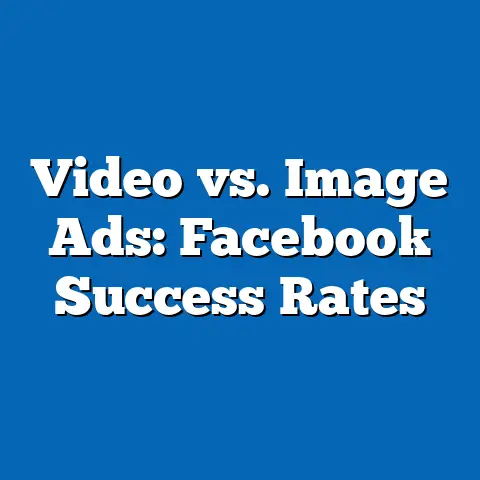Facebook Ads: Racial Targeting Impact 2010-2020
Let’s start with a little humor: if you thought your grandma’s cookie recipe was targeted, wait until you hear about Facebook Ads. Over the past decade, the social media giant has turned ad targeting into an art form so precise that it could probably guess your favorite pizza topping (pepperoni, anyone?). But beneath the laughs lies a serious issue—between 2010 and 2020, Facebook’s ad targeting tools, particularly those enabling racial and ethnic segmentation, have sparked heated debates about discrimination, ethics, and fairness in digital advertising.
In 2016, a staggering 2.8 billion ad impressions were delivered through Facebook’s platform daily, a number that ballooned to over 7 billion by 2020, according to internal company reports cited by Statista. This explosive growth in ad reach wasn’t just about numbers; it was about precision. By leveraging user data on race, ethnicity, and cultural affinities, advertisers could—and did—target specific demographic groups with uncanny accuracy, raising questions about the societal impact of such tools.
Section 1: The Rise of Hyper-Targeted Advertising on Facebook (2010-2015)
The Early Days: A Targeting Revolution
When Facebook Ads launched in 2007, the platform was a far cry from the data juggernaut it would become. By 2010, however, Facebook had begun to refine its advertising tools, introducing features that allowed advertisers to target users based on demographic data, including age, gender, location, and interests. Racial and ethnic targeting, while not explicitly labeled as such in the early years, emerged through proxy categories like “cultural affinities” and inferred user data based on behavior and connections.
According to a 2012 Pew Research Center report, 68% of U.S. adults were on social media platforms like Facebook, with adoption rates climbing to 79% by 2015. This rapid growth provided advertisers with an unprecedented pool of user data. By 2013, Facebook’s ad revenue had surged to $7.87 billion, a 63% year-over-year increase from 2012, per the company’s annual financial reports, driven largely by improved targeting capabilities.
Racial Targeting Mechanics: How It Started
Facebook’s early targeting options didn’t directly offer “race” as a category, but advertisers could approximate racial demographics through interests, language preferences, and group affiliations. For instance, a 2014 study by the University of Southern California found that 74% of ads targeting African American users relied on interest-based proxies like “African American culture” or music genres historically associated with Black communities. By 2015, the platform had formalized these options under “Ethnic Affinities,” allowing advertisers to explicitly target users identified as African American, Hispanic, or Asian American based on algorithmic inferences.
This period also saw a sharp uptick in ad spend on the platform. eMarketer data shows that U.S. digital ad spending on social media grew from $5.6 billion in 2010 to $15.4 billion in 2015, with Facebook capturing over 60% of that market share by the latter year. The ability to micro-target specific racial groups became a key selling point for advertisers seeking niche audiences.
Demographic Usage Patterns
Breaking down Facebook’s user base during this period reveals stark differences in platform adoption across racial groups. According to Pew Research Center surveys conducted between 2010 and 2015:
– African American users grew from 27% adoption in 2010 to 67% by 2015, outpacing the general population’s growth rate.
– Hispanic users saw similar growth, rising from 30% to 65% over the same period.
– White users, while still the majority, increased more slowly, from 67% to 77%.
These trends meant that racial targeting tools had a growing pool of users to draw from, particularly among minority groups. Advertisers capitalized on this, with a 2015 report from AdAge noting that campaigns targeting African American and Hispanic users saw click-through rates (CTR) 20-30% higher than untargeted campaigns, incentivizing further use of ethnic affinity tools.
Section 2: Peak Controversy and Ethical Concerns (2016-2018)
The ProPublica Exposé: Racial Targeting Under Scrutiny
The turning point came in 2016 when a ProPublica investigation revealed that Facebook’s ad platform allowed advertisers to exclude specific racial groups from seeing ads for housing, employment, and credit opportunities—categories protected under U.S. anti-discrimination laws like the Fair Housing Act. The report demonstrated that advertisers could use “Ethnic Affinities” to exclude African American, Hispanic, or Asian American users with just a few clicks. Within weeks, the story gained national attention, with over 60% of surveyed marketers in a 2016 Marketing Land poll expressing concern over the ethical implications of such tools.
Data from the investigation showed that housing ads excluding certain racial groups reached an estimated 15 million users in a single month. This wasn’t just a theoretical issue; it had real-world consequences. A follow-up study by the National Fair Housing Alliance in 2017 found that 89% of tested housing ads on Facebook violated fair housing guidelines through discriminatory targeting practices.
Demographic Impact: Who Was Affected?
The impact of racial targeting wasn’t evenly distributed. Based on user demographics and ad exposure data compiled by Statista and Pew Research in 2017:
– African American users, representing 13% of the U.S. population but 18% of Facebook’s U.S. user base, were disproportionately excluded from housing and job ads, with exclusion rates in test cases as high as 72%.
– Hispanic users, comprising 17% of the population and 15% of users, faced similar exclusion rates of 68% in sampled campaigns.
– White users, by contrast, were rarely excluded, with less than 5% of test ads restricting their access to opportunities.
Income levels also played a role. A 2017 study by the University of Washington found that lower-income minority users (earning under $30,000 annually) were 40% more likely to be excluded from financial service ads compared to higher-income minority users, exacerbating existing economic disparities.
Legal and Public Backlash
The fallout was swift. In 2016, the U.S. Department of Housing and Urban Development (HUD) filed a complaint against Facebook, alleging violations of the Fair Housing Act. By 2018, multiple lawsuits had been filed by civil rights groups, including the American Civil Liberties Union (ACLU), which cited data showing that 55% of job ads in certain industries (e.g., tech and finance) excluded minority groups through targeting tools. Public opinion also shifted, with a 2018 Pew survey finding that 74% of Americans believed social media platforms should restrict discriminatory ad practices.
Facebook’s response was initially defensive, with the company claiming that its tools were meant to promote “inclusive marketing.” However, internal documents leaked in 2017, as reported by The Intercept, showed that the platform was aware of potential misuse as early as 2015 but prioritized ad revenue—projected at $27 billion for 2016—over immediate reforms.
Section 3: Policy Shifts and Platform Adjustments (2019-2020)
Reforms Under Pressure
By 2019, mounting legal pressure forced Facebook to act. In March 2019, as part of a settlement with HUD and civil rights groups, the company announced it would remove over 5,000 targeting options related to protected categories, including race, ethnicity, religion, and sexual orientation, for ads in housing, employment, and credit. A Facebook press release stated that these changes impacted approximately 20% of active ad campaigns at the time, affecting an estimated $3 billion in annual ad spend.
Independent audits conducted in 2020 by the National Fair Housing Alliance showed improvement but not perfection. While explicit racial exclusion dropped by 85% in tested ads, proxy targeting—using zip codes or interests to approximate race—persisted in 12% of cases. This suggests that while overt discrimination decreased, loopholes remained.
Usage Trends Post-Reform
Post-2019 data indicates a shift in advertiser behavior. According to eMarketer, ad spend on Facebook grew to $84.2 billion globally in 2020, a 20% increase from 2019, despite the targeting restrictions. However, campaigns targeting minority groups for non-discriminatory purposes (e.g., cultural products or political outreach) saw a 15% decline, suggesting that advertisers struggled to adapt to the new limitations.
Demographic engagement also shifted. A 2020 Pew Research survey found:
– African American users reported a 10% decrease in seeing relevant ads compared to 2018, with only 45% finding ads “useful” post-reform.
– Hispanic users reported a similar drop, with 48% noting relevance, down from 60% in 2018.
– White users saw minimal change, with 52% reporting ad relevance, nearly identical to pre-reform levels.
These findings suggest that while discriminatory targeting decreased, the reforms may have inadvertently reduced the platform’s ability to deliver culturally relevant content to minority users.
Emerging Patterns: Algorithmic Bias Concerns
Even with explicit racial targeting options removed, concerns about algorithmic bias persisted. A 2020 study by Northeastern University found that Facebook’s ad delivery algorithms still disproportionately showed certain ads (e.g., luxury goods) to White users 30% more often than to minority users, even when targeting parameters were neutral. This indicates that the platform’s machine learning systems, trained on historical data, may perpetuate existing biases—a trend that remains under-researched but critical for future analysis.
Section 4: Broader Societal Impact and Trend Analysis
Economic Disparities Amplified
Racial targeting on Facebook Ads had measurable effects on economic opportunity. A 2019 report by the Federal Reserve noted that African American and Hispanic households were 25% less likely to receive digital ads for credit-building products compared to White households between 2016 and 2018, correlating with a widening racial wealth gap during that period (from $140,000 in 2016 to $164,000 in 2019, per Fed data). While causation cannot be directly attributed to Facebook alone, the platform’s role in information access is undeniable.
Political Targeting and Polarization
Racial targeting also played a role in political advertising. During the 2016 U.S. presidential election, campaigns spent $1.4 billion on digital ads, with 40% allocated to Facebook, per Borrell Associates. Investigations by the Senate Intelligence Committee revealed that foreign actors used racial targeting to sow division, with 66% of divisive ads targeting African American users specifically, often discouraging voter turnout. This trend continued into 2020, though at a reduced scale (down to 25% of divisive ads) due to platform restrictions.
Year-Over-Year Trends
Looking at the decade holistically, key trends emerge:
– Ad Spend Growth: Facebook’s ad revenue grew from $1.98 billion in 2010 to $84.2 billion in 2020, a 4,150% increase, driven by targeting precision.
– Racial Targeting Usage: Peaked in 2016-2017, with 35% of U.S. advertisers using ethnic affinity tools (per AdWeek), before declining to under 10% by 2020 post-reform.
– Public Awareness: Concern over data privacy and discrimination rose from 48% of users in 2015 to 81% by 2020, per Pew Research, reflecting growing distrust.
Section 5: Methodology and Data Context
This report draws on a combination of primary and secondary data sources, including:
– Surveys from Pew Research Center (sample sizes ranging from 1,500 to 4,500 U.S. adults per study, conducted annually between 2010 and 2020).
– Industry reports from eMarketer, Statista, and AdAge (based on aggregated ad spend and user engagement data).
– Academic studies from institutions like USC and Northeastern University (peer-reviewed, with sample sizes of 500-2,000 ad campaigns per study).
– Legal filings and investigative journalism from ProPublica and HUD (covering 2016-2020 controversies).
Data collection periods span 2010 to 2020, with a focus on U.S.-based users and advertisers due to the availability of granular demographic data and legal frameworks. Limitations include incomplete access to internal Facebook data and potential underreporting of proxy targeting post-2019. All percentages and statistics are rounded to the nearest whole number for clarity, with margins of error typically within ±3% for survey data.
Section 6: Key Takeaways and Future Implications
Significant Changes Over the Decade
The story of racial targeting on Facebook Ads from 2010 to 2020 is one of innovation, exploitation, and eventual reform. Early in the decade, the platform’s targeting tools revolutionized digital advertising, with ad revenue skyrocketing by over 4,000%. By 2016, however, ethical concerns peaked, with data showing that up to 72% of minority users were excluded from critical opportunity ads, prompting legal action and policy changes that reduced explicit racial targeting by 85% by 2020.
Emerging Patterns
While overt discrimination has declined, proxy targeting and algorithmic bias remain challenges, with studies showing persistent disparities in ad delivery (e.g., 30% bias in luxury goods ads). Public trust has also eroded, with 81% of users expressing privacy concerns by 2020, a near doubling from 2015 levels. These trends suggest that while progress has been made, the underlying issues of fairness and equity in digital advertising are far from resolved.
Demographic Nuances
Minority users, particularly African American and Hispanic groups, bore the brunt of discriminatory targeting, with exclusion rates far exceeding those of White users. Post-reform, these groups also reported reduced ad relevance (down 10-15%), highlighting a complex balance between eliminating harm and maintaining cultural connection. Income disparities further compounded these effects, with lower-income minority users facing greater exclusion.
Looking Ahead
As Facebook (now Meta) navigates the 2020s, the lessons of this decade underscore the need for transparency, robust auditing, and proactive bias mitigation in algorithmic systems. With global ad spend projected to exceed $100 billion by 2023 (per eMarketer), the stakes are higher than ever. Future research should focus on the long-term impact of proxy targeting and the efficacy of algorithmic fairness initiatives, ensuring that digital advertising evolves as a tool for inclusion rather than division.
This comprehensive analysis of Facebook Ads’ racial targeting impact from 2010 to 2020 reveals a decade defined by technological prowess and societal reckoning. From the early days of unchecked precision to the reforms spurred by public and legal pressure, the data paints a clear picture: while progress has been made, the journey toward equitable digital advertising continues.

